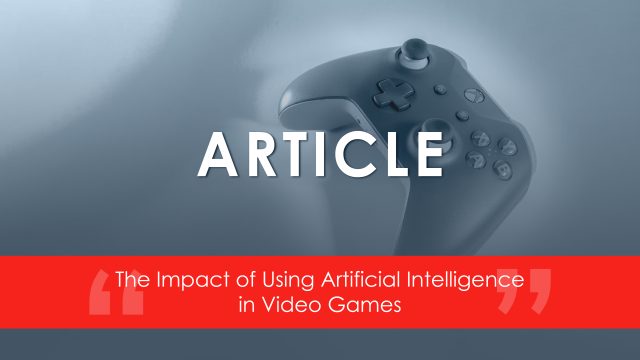
The use of artificial intelligence (AI) in video games provides more immersive, challenging and personalized experiences for players. Through AI, it is possible to program behaviors and decision-making by computer-controlled characters or elements to make decisions and interact with the player in a more realistic way.
Although it may seem like a recent innovation, the application of AI in video games dates back to the 1990s, when some video games already contained NPCs (Non-Player Characters) with the ability to adapt tactically to the actions of the players. The technological advances of recent decades, however, have considerably raised the level of sophistication of AI in games.
In addition to enabling more realistic behavior from NPCs, AI can also be used to create new worlds and stories. Some games use AI algorithms to generate unique settings, fauna, flora and structures automatically, allowing players to explore vast and dynamic universes without the need for all the elements to be designed manually by programmers.
Additionally, the narrative of video games can evolve according to the player’s decisions, generating deeply personalized experiences. This narrative adaptability represents one of the greatest promises of AI in the interactive entertainment sector.
Industry-leading companies have been investing significantly in AI-based solutions. A recent example is Microsoft, which announced the development of Muse, a generative AI model that is able to generate a game environment based on the player’s actions. Microsoft is also exploring how AI can optimize classic games for modern consoles.
If, on the one hand, we observe the constant advancement of AI in the video games industry, on the other, it should be noted that not all AI initiatives have been well accepted by the community of professionals working in the video games industry or by the players themselves. A significant example occurred with the French voice actors of Apex Legends, who refused to sign a contract that contained a clause authorizing their voices to be used to train AI models. This case highlights growing concerns related to copyright, privacy and the use of personal data to train algorithms.
European regulations have been accompanying these concerns and are beginning to reflect them. The Regulation on Artificial Intelligence (Regulation (EU) 2024/1689 of June 13, 2024) establishes strict rules for the use of AI systems, imposing restrictions based on the level of associated risk.
As an example, the use of a chatbot in a video game to simulate and process conversations between an NPC and a player can be classified with different levels of risk, depending on the content of the dialogues and the role of the AI system in the interaction with the player.
This Regulation also introduces the obligation to guarantee AI literacy on the part of the professionals who develop or use these systems.
This means that developers of AI systems and users of AI systems in a professional capacity must take measures to ensure, as far as possible, that their employees have a sufficient level of AI literacy, taking into account various factors such as experience, academic qualifications and technical knowledge.
Also on a labour perspective, the effects of the increasing automation generated by AI are already being felt. The year 2024 was marked by thousands of layoffs in various video game development companies, and it is estimated that in that year, 1 in 10 video game programmers was subject to a layoff which, in part, may have been boosted by the application of AI systems in video game development.
Replacing human tasks with automated systems poses significant challenges, but can also open up opportunities. Small studios with limited resources will be able to use AI to develop games with less manpower, democratizing access to the video game market.
The future of AI in video games remains open. The next few years will be crucial in determining whether the impact will be mostly positive – fostering innovation, creativity and efficiency – or whether it will bring substantial risks to the ethics and rights of the professionals involved.
por Ricardo Cardoso e Inês Bragança Gaspar, Área de Prática – Desporto, Moda e Entretenimento



